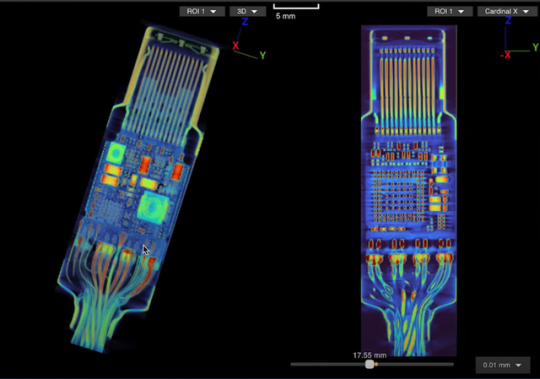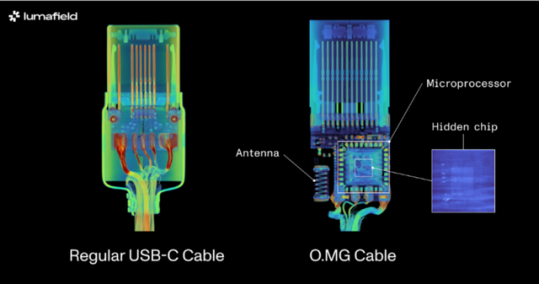#embedded microcontroller manufacturer
Explore tagged Tumblr posts
Text
https://www.futureelectronics.com/p/semiconductors--microcontrollers--32-bit/xmc1402f064x0128aaxuma1-infineon-2064703
What is a microcontroller, 32 bit embedded microcontroller integrated circuit
XMC1000 Series 64 kB Flash 16 kB RAM 32 Bit Microcontroller - LQFP-64
#Infineon#XMC1402F064X0128AAXUMA1#Microcontrollers#32 bit#embedded microcontroller integrated circuit#Low power microcontrollers software#embedded microcontroller manufacturer#programming#wireless microcontroller#development board
1 note
·
View note
Text
Embedded microcontroller manufacturers, 16 bit input and output peripherals
MC9S12D Series 12 kB RAM 256 kB Flash 16-Bit SMT Flash Microcontroller - LQFP-112
0 notes
Text
https://www.futureelectronics.com/p/semiconductors--microcontrollers--32-bit/stm32f429zit6-stmicroelectronics-6028224
What is 32 bit microcontroller, microcontroller manufacturer, development board
STM32F Series 2 MB Flash 256 kB RAM 180 MHz 32-Bit Microcontroller - LQFP-144
#Microcontrollers#32 bit#STM32F429ZIT6#STMicroelectronics#microcontroller manufacturer#development board#Wireless microcontroller#lcd microcontrollers#programming#Low power#Flash#32bit embedded microcontrollers software
1 note
·
View note
Text
https://www.futureelectronics.com/p/semiconductors--microcontrollers--8-bit/atmega128l-8au-microchip-2038197
What is 8 bit microcontroller, lcd microcontrollers, low power microcontrollers
ATmega Series 128 KB Flash 4 KB SRAM 8 MHz 8-Bit Microcontroller - TQFP-64
#Microcontrollers#8 bit#ATMEGA128L-8AU#Microchip#lcd microcontrollers#low power#flash memory#microcontroller manufacturers#programming microcontroller#Wireless microcontroller Cypress#8 bit embedded microcontrollers software
1 note
·
View note
Text
https://www.futureelectronics.com/p/semiconductors--microcontrollers--32-bit/stm32l471vgt6tr-stmicroelectronics-9173291
What is a microcontroller, lcd microcontrollers, programming microcontroller
STM32L Series 1 MB Flash 128 kB RAM 80 MHz 32-Bit Microcontroller - LQFP-100
#STMicroelectronics#STM32L471VGT6TR#Microcontrollers#32 bit#What is a microcontroller#lcd microcontrollers#programming microcontroller#32 bit embedded microcontrollers software#USB Wireless#32 bit microcontroller manufacturers
1 note
·
View note
Text
https://www.futureelectronics.com/p/semiconductors--microcontrollers--8-bit/pic12f629t-i-sn-microchip-8748717
What is a microcontroller, programming microcontroller, lcd microcontrollers
PIC12F Series 1.75 kB Flash 64 B SRAM SMT 8-Bit Microcontroller - SOIC-8
#Microcontrollers#8 bit#PIC12F629T-I/SN#Microchip#what is a microcontroller#programming microcontroller#lcd#8 bit embedded microcontroller manufacturers#Low power microcontroller#usb#wireless#pic#Pic microcontroller#programming
1 note
·
View note
Text
https://www.futureelectronics.com/p/semiconductors--microcontrollers--32-bit/stm32f429zit6-stmicroelectronics-6028224
Wireless Microcontrollers, USB microcontroller, programmable pic microcontroller
STM32F Series 2 MB Flash 256 kB RAM 180 MHz 32-Bit Microcontroller - LQFP-144
#Microcontrollers#32 bit#STM32F429ZIT6#STMicroelectronics#wireless#USB#programmable pic microcontroller#low power microcontroller#integrated circuit#32 bit software microcontroller#embedded microcontroller manufacturers
1 note
·
View note
Text
https://www.futureelectronics.com/p/semiconductors--microcontrollers--32-bit/stm32f105vct6-stmicroelectronics-1949478
32 bit embedded microcontrollers, programmable microcontrollers, microprocessor
STM32F Series 256 kB Flash 64 kB RAM 72 MHz 32-Bit Microcontroller - LQFP-100
#Microcontrollers#32 bit#STM32F105VCT6#STMicroelectronics#32 bit embedded#programmable#microprocessor#warless microcontroller manufacturers#Low power microcontroller#lcd microcontrollers#software microcontrollers
1 note
·
View note
Text
https://www.futureelectronics.com/p/semiconductors--microcontrollers--8-bit/atmega128l-8au-microchip-2038197
lcd microcontrollers, Low power microcontroller, microcontroller software
ATmega Series 128 KB Flash 4 KB SRAM 8 MHz 8-Bit Microcontroller - TQFP-64
#Microchip#ATMEGA128L-8AU#Microcontrollers#8 bit#lcd microcontrollers#Low power microcontroller#software#8 bit embedded microcontroller manufacturers#programmable#What is a microcontroller#USB microcontroller#Pic microcontrollers wireless
1 note
·
View note
Text
https://www.futureelectronics.com/p/semiconductors--microcontrollers--32-bit/stm32f207igt6-stmicroelectronics-3044937
Programmable pic microcontrollers, USB microcontrollers, program memory
STM32F Series 1 MB Flash 132 KB RAM 120 MHz 32-Bit Microcontroller - LQFP-176
#STMicroelectronics#STM32F207IGT6#Microcontrollers#32 bit#Programmable pic#USB microcontrollers#program memory#lcd#32-bit data memory#data#32 bit embedded microcontroller manufacturers#wireless microcontrollers
1 note
·
View note
Text
https://www.futureelectronics.com/p/semiconductors--microcontrollers--32-bit/pic32mx460f512l-80i-pt-microchip-7134422
32 bit programming microcontrollers, embedded microcontroller manufacturers
PIC32MX Series 512 kB Flash 32 kB RAM 32-Bit Microcontroller SMT - TQFP-100
#Microcontrollers#32 bit#PIC32MX460F512L-80I/PT#Microchip#programming#embedded microcontroller manufacturers#low power microcontrollers software#pic microcontrollers#wireless microcontroller#lcd microcontrollers
1 note
·
View note
Text
https://www.futureelectronics.com/p/semiconductors--microcontrollers--32-bit/stm32g474qct6-stmicroelectronics-7173732
Programmable microcontrollers, what is microcontroller, wireless microcontroller
STM32G Series 256 kB Flash 128 kB RAM 170 MHz 32-Bit Microcontroller - LQFP-128
#Microcontrollers#32 bit#STM32G474QCT6#STMicroelectronics#Programmable#wireless microcontroller#32 bit embedded microcontroller manufacturers#Low power#What is microcontroller#lcd microcontrollers
1 note
·
View note
Text
https://www.futureelectronics.com/p/semiconductors--analog--amplifiers--general-purpose/ts391iylt-stmicroelectronics-5071806
Amplifiers, 16 bit microcontroller, lcd microcontrollers, wireless microcontroller
TS391 Series 36 V 400 nA SMT Single General Purpose Comparator - SOT-23
#STMicroelectronics#TS391IYLT#Operational#General Purpose Amplifiers. Amplifiers#16 bit#lcd#wireless#embedded microcontroller manufacturers#embedded microcontrollers software#What is a lcd microcontroller#special programmable
1 note
·
View note
Text
https://www.futureelectronics.com/p/semiconductors--microcontrollers--8-bit/pic16c73b-04i-so-microchip-9673831
lcd microcontrollers, Microcontrollers software, Wireless microcontroller
PIC16 Series 192 B RAM 4 K x 14 Bit EPROM 8-Bit CMOS Microcontroller - SPDIP-28
#Microchip#PIC16C73B-041/SO#Microcontrollers#8 bit#manufacturers#8 bit embedded microcontrollers#lcd microcontrollers#Microcontrollers software#Wireless#low power microcontroller#What is microcontroller
1 note
·
View note
Text
https://www.futureelectronics.com/p/semiconductors--microcontrollers--8-bit/pic16f872-i-so-microchip-8119406
Low power microcontroller, embedded microcontroller, embedded microcontroller
PIC16F Series 3.5 kB Flash 128 B RAM 20 MHz 8-Bit Microcontroller - SOIC-28
#Microchip#PIC16F872-I/SO#Microcontrollers#8 bit#Lcd#8-bit microcontroller programming#Low power microcontroller#embedded microcontroller#8 bit embedded#What is microcontroller#pic microcontroller 8 bit#microcontroller manufacturer
1 note
·
View note
Text
How to know if a USB cable is hiding malicious hacker hardware
Are your USB cables sending your data to hackers?

We expect USB-C cables to perform a specific task: transferring either data or files between devices. We give little more thought to the matter, but malicious USB-C cables can do much more than what we expect.
These cables hide malicious hardware that can intercept data, eavesdrop on phone calls and messages, or, in the worst cases, take complete control of your PC or cellphone. The first of these appeared in 2008, but back then they were very rare and expensive — which meant the average user was largely safeguarded.
Since then, their availability has increased 100-fold and now with both specialist spy retailers selling them as “spy cables” as well as unscrupulous sellers passing them off as legitimate products, it’s all too easy to buy one by accident and get hacked. So, how do you know if your USB-C cable is malicious?
Further reading: We tested 43 old USB-C to USB-A cables. 1 was great. 10 were dangerous
Identifying malicious USB-C cables
Identifying malicious USB-C cables is no easy task since they are designed to look just like regular cables. Scanning techniques have been largely thought of as the best way to sort the wheat from the chaff, which is what industrial scanning company, Lumafield of the Lumafield Neptune industrial scanner fame, recently set out to show.
The company employed both 2D and 3D scanning techniques on the O.MG USB-C cable — a well-known hacked cable built for covert field-use and research. It hides an embedded Wi-Fi server and a keylogger in its USB connector. PCWorld Executive Editor Gordon Ung covered it back in 2021, and it sounds scary as hell.
What Lumafield discovered is interesting to say the least. A 2D X-ray image could identify the cable’s antenna and microcontroller, but only the 3D CT scan could reveal another band of wires connected to a die stacked on top of the cable’s microcontroller. You can explore a 3D model of the scan yourself on Lumafield’s website.

It confirms the worst — that you can only unequivocally confirm that a USB-C cable harbors malicious hardware with a 3D CT scanner, which unless you’re a medical radiographer or 3D industrial scientist is going to be impossible for you to do. That being so, here are some tips to avoid and identify suspicious USB-C cables without high-tech gear:
Buy from a reputable seller: If you don’t know and trust the brand, simply don’t buy. Manufacturers like Anker, Apple, Belkin, and Ugreen have rigorous quality-control processes that prevent malicious hardware parts from making it into cables. Of course, the other reason is simply that you’ll get a better product — 3D scans have similarly revealed how less reputable brands can lack normal USB-C componentry, which can result in substandard performance. If you’re in the market for a new cable right now, see our top picks for USB-C cables.
Look for the warning signs: Look for brand names or logos that don’t look right. Strange markings, cords that are inconsistent lengths or widths, and USB-C connectors with heat emanating from them when not plugged in can all be giveaways that a USB-C cable is malicious.
Use the O.MG malicious cable detector: This detector by O.MG claims to detect all malicious USB cables.
Use data blockers: If you’re just charging and not transferring data, a blocker will ensure no data is extracted. Apart from detecting malicious USB-C cables, the O.MG malicious cable detector functions as such a data blocker.
Use a detection service: If you’re dealing with extremely sensitive data for a business or governmental organization, you might want to employ the services of a company like Lumafield to detect malicious cables with 100 percent accuracy. Any such service will come with a fee, but it could be a small price to pay for security and peace of mind.
11 notes
·
View notes